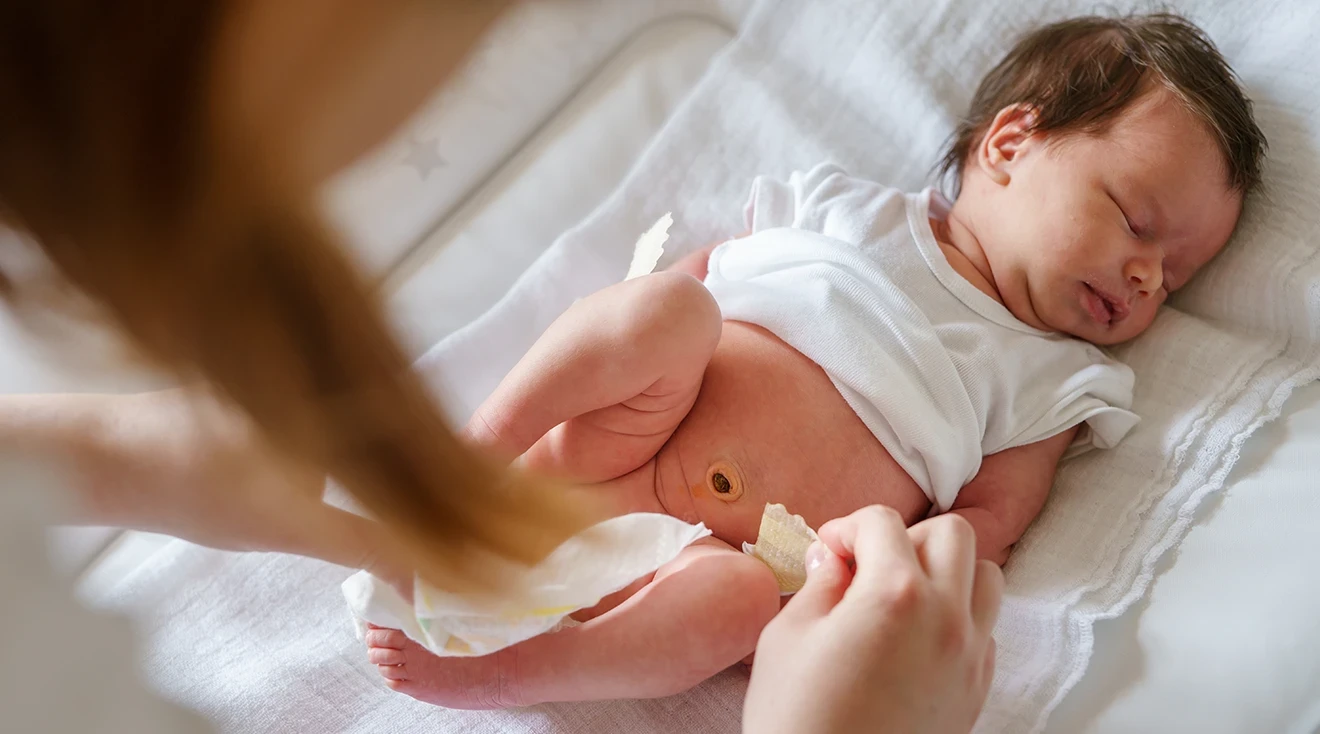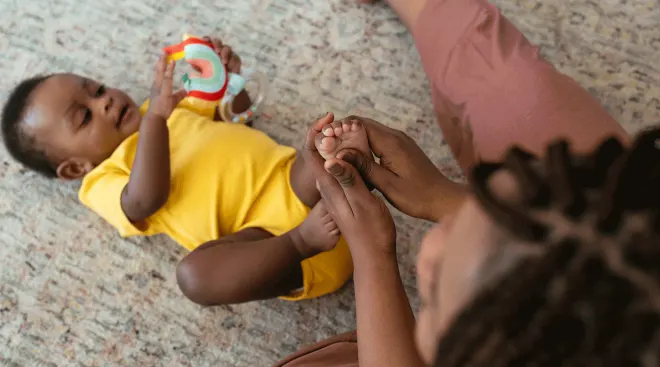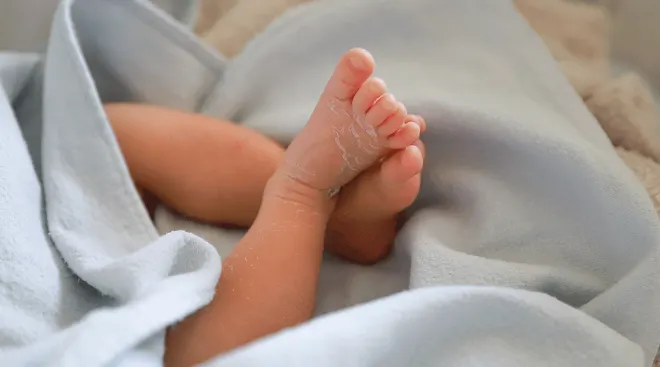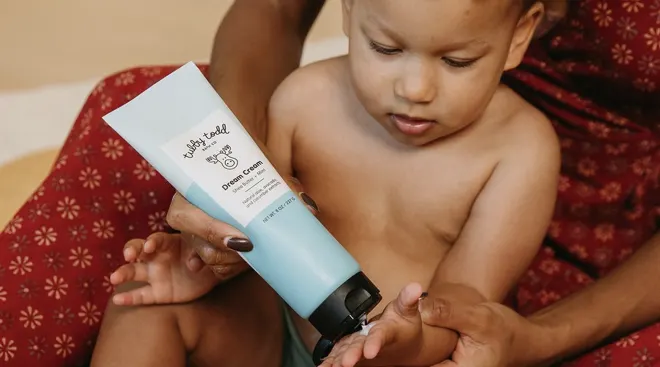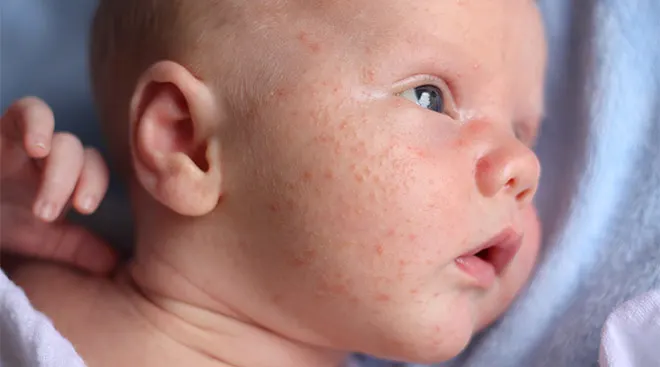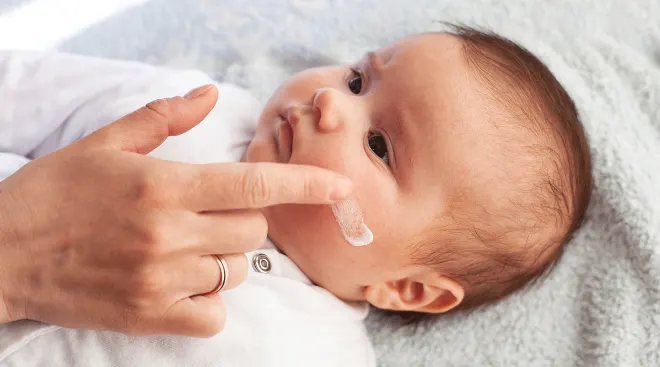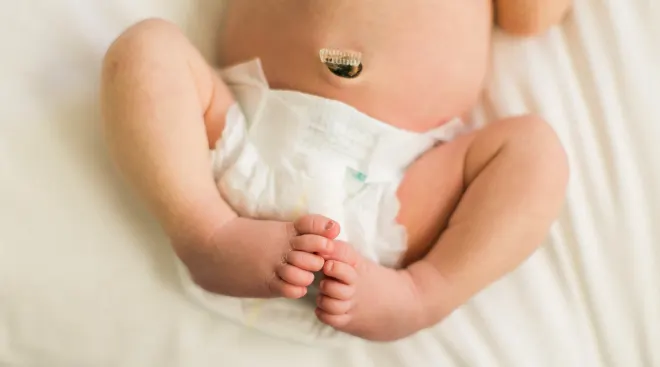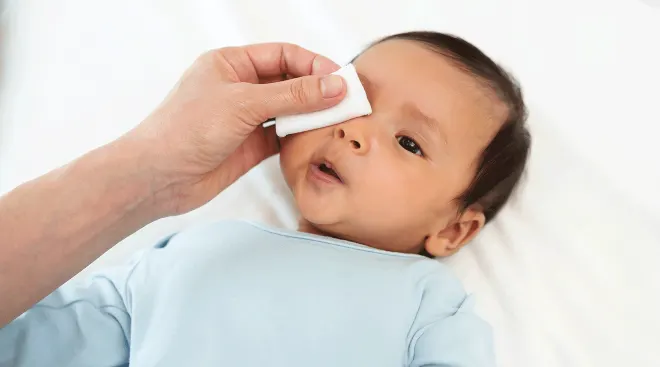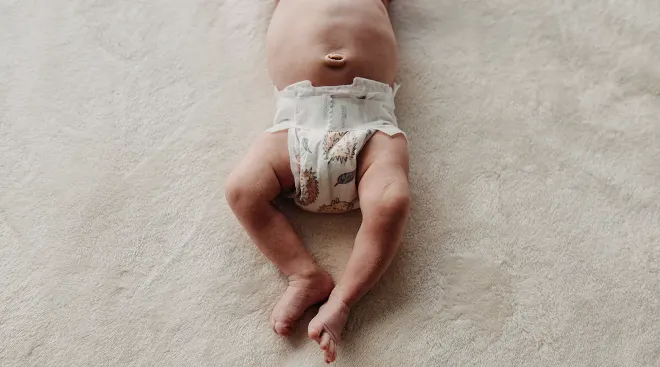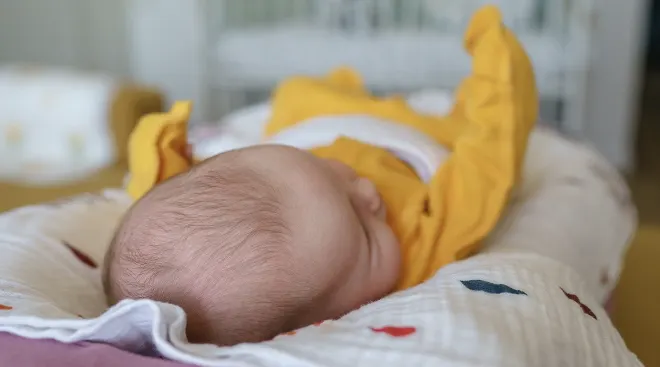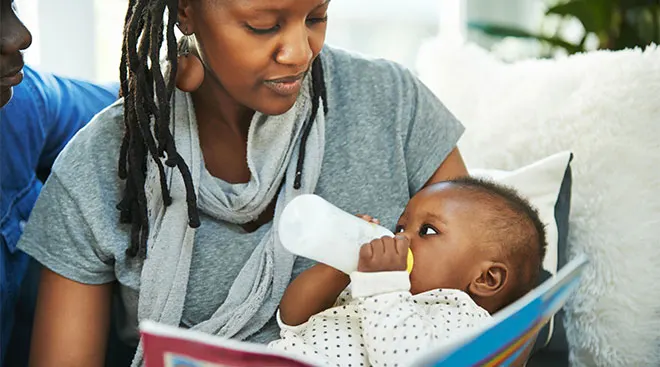Everything You Need to Know About Newborn Circumcision Care
Choosing whether or not to circumcise your newborn is a highly personal decision. But if you’ve decided to do it, you might be wondering what you need to know about circumcision after care. From how to help soothe baby in the following days to what healing signs to look for, we asked experts for the lowdown on newborn circumcision care.
Circumcision is performed using one of three methods: the Gomco clamp, the Mogen clamp or the Plastibell, which is a ring that’s attached to the penis under the foreskin. (Learn more about each procedure here.) While it can be an uncomfortable procedure, most providers use a local anesthetic to numb the area, says Denise Scott, MD, an Oklahoma-based pediatrician and expert with JustAnswer. So regardless of the method used, baby shouldn’t feel too much pain afterward. However, if baby cries or appears tired in the days following circumcision (two things newborns typically do anyway), try rocking baby, giving him a bottle or pacifier, or, if you’re breastfeeding, offering a nursing session, Scott says. Tending to the area will also help soothe skin tissue and minimize baby’s discomfort (more on this below).
When it comes to newborn circumcision care, there actually isn’t much for caregivers to do. Once the procedure is finished, the doctor will cover the tip of the penis with gauze and Vaseline to keep it from rubbing against baby’s diaper, according to the American College of Obstetricians and Gynecologists (ACOG). Baby should urinate within two to four hours of being circumcised, Scott adds, and, as this happens, the gauze may come off in baby’s diaper. Follow your doctor’s post-procedural instructions about whether to leave it off or apply a clean piece. Most likely, if a clamp was used, you’ll want to keep the wound covered with Vaseline-soaked gauze until the scab heals (within three to four days), Scott says.
For a plastibell procedure, no special circumcision care is generally required. The clear plastic ring is tied with a string to keep it in place and will fall off on its own within seven to 10 days. “It’ll start to detach in one area, then gradually work its way around the penis until it’s dangling,” Scott says. “We recommend allowing it to fully detach on its own and not to tug on it.” While Vaseline isn’t needed, it can be used if the penis “seems dry or sticks to the diaper,” she adds.
Can baby’s wound get wet during circumcision care?
Doctors typically advise not giving newborns a bath until their umbilical cord falls off and the area fully heals. Instead, baby should be given light sponge baths with damp washcloths, so the umbilical cord can stay dry. Given this, it’s normal to wonder if baby’s circumcision wound also needs to stay dry. Luckily, it’s okay for the wound to get wet—and it will when baby urinates. The most important aspect of newborn circumcision care is to keep the site clean and change baby’s diaper frequently, so stool doesn’t cause an infection, Scott says. “If needed, a washcloth can be saturated with warm water and used to rinse the area,” she adds. During diaper changes, follow your doctor’s specific circumcision care instructions on whether to replace the Vaseline and gauze.
After circumcision, the skin around baby’s penis will look raw, red, swollen and maybe even a little bruised. The wound might also bleed slightly, Scott says, “but there shouldn’t be any active bleeding.” As baby’s penis starts to heal, parents can expect to see certain signs of healing, the biggest one being a yellowing scab or a thin, yellow film developing over the area. This is healing tissue, Scott explains, but many parents mistake it for a circumcision infection. If the Plastibell method was used, the remaining skin around the penis may darken. Parents can expect the newborn circumcision wound to fully heal within seven to 10 days.
You’ll be glad to know that, in most cases, the circumcision site will heal on its own without issue. Infection during circumcision care is rare, as long as the procedure is “performed by a trained professional in a normal sterile manner,” says Natalya Vernovsky, MD, an Illinois-based pediatrician and expert with JustAnswer. While it’s rare, Scott warns that—due to the skin’s role as a natural barrier against bacteria—any time the skin is cut, there is the potential for infection. Plus, as mentioned above, stool that’s not cleaned properly may also lead to an infected circumcision wound. “[Practice] good handwashing before and after changing diapers,” Scott says, “since bacteria can [also] be transmitted from a person’s hands.”
If an infection does occur during circumcision after care, both experts say these are the symptoms to look for:
- The area looks red and swollen, with possible pus or discharge
- Diaper changes appear to cause baby pain
- Baby is fussier than normal, inconsolable or refuses to feed
- A fever (though Scott notes newborns may not always run a fever in case of infection)
If you believe baby has an infected circumcision wound, reach out to your pediatrician immediately, as it’s considered a serious issue in newborns due to their underdeveloped immune systems. “An infected circumcision is treated with antibiotics, which may be given in the hospital and through an IV (intravenous line) to get the medicine to the infected area most rapidly and prevent spread of the infection,” Scott explains. “If an infection is just beginning, an oral antibiotic may be used along with local care (antibiotic ointment).”
Along with a circumcision infection, according to Scott and Johns Hopkins Medicine there are a few other instances in which a call to the doctor is necessary:
- Any bleeding at the circumcision site that’s not healing
- Baby hasn’t urinated in a few hours after the procedure
- The plastic ring (used in the Plastibell method) has slipped down over the shaft of the penis (where it could get stuck)
While these situations should be addressed right away, Scott emphasizes that parents should feel empowered to call their doctors with any questions or concerns. “If the area looks suspicious but baby acts perfectly fine and isn’t disturbed when changing his diaper, most likely there is no infection, but having it checked is worthwhile,” she says. “As pediatricians, we would much rather have you call with a concern instead of worrying. Often a phone call is all that is needed, and they can tell you whether your baby needs to be seen…My philosophy is don’t ever apologize for being concerned about your child.”
A circumcision revision, also called re-circumcision, occurs when the results from the original procedure aren’t satisfactory. While circumcision revisions are not common, they most often happen due to excess foreskin that’s been left on the penis after the initial circumcision, or problems caused by excessive scar tissue, Vernovsky and Scott say. “Redundant skin can lead to irritation or infections,” Vernovsky explains. “If such concerns arise, the child should be referred to a pediatric urologist for accurate evaluation and treatment.”
About the experts:
Denise Scott, MD, is a pediatrician with JustAnswer and a pediatric endocrinologist based in Oklahoma with over 30 years of experience. Certified in culinary medicine, Scott also runs the blog Feed Future Health and is the author of Feed Your Child’s Future Health: Prevent Disease before it Starts. She received her medical degree from the University of Texas Medical Branch and completed her residency at the University of Oklahoma Health Sciences Center, with a fellowship at the National Institutes of Health.
Natalya Vernovsky, MD, is an Illinois-based pediatrician and expert with JustAnswer. She has over 20 years of experience and received her medical degree from Rush University Medical Center.
Please note: The Bump and the materials and information it contains are not intended to, and do not constitute, medical or other health advice or diagnosis and should not be used as such. You should always consult with a qualified physician or health professional about your specific circumstances.
Plus, more from The Bump:
Navigate forward to interact with the calendar and select a date. Press the question mark key to get the keyboard shortcuts for changing dates.
Advertisement
Advertisement
Advertisement
Advertisement

































